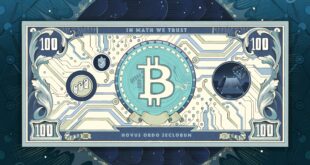The Nasdaq/dow Jones ratio has started to drop at the exact same level of 2000 dotcom
This is mental pic.twitter.com/kF0abgFB2O
— 🅰🅻🅴🆂🆂🅸🅾 (@AlessioUrban) April 20, 2022
This is all really just manufactured.
Record highs were caused by record money printing. The record drops are caused by a stupid response to record money printing causing an inflation crisis.
It’s no wonder it’s so easy for the people in Washington to do insider trading.
The stock market’s brutal year neared a grim milestone as the S&P 500’s slide on Friday threatened to leave it in a bear market for the first time since March 2020, fueled by worries over sky high inflation, a hawkish Federal Reserve and future economic growth.
The benchmark S&P 500 index fell below 3837.248 during Friday’s session, a decline that on an intraday basis put it more than 20% below its Jan. 3 record closing high. However, the index closed above that level, and did not confirm it was in a bear market – frequently defined as a drop of at least 20% from a closing high.
If history is any guide, a bear market would mean more pain could be in store for investors. The S&P 500 has fallen by an average of 32.7% in 13 bear markets since 1946, including a nearly 57% drop during the 2007-2009 bear market during the financial crisis, according to Sam Stovall, chief investment strategist at CFRA.
It has taken a little over a year on average for the index to reach its bottom during bear markets, and then roughly another two years to return to its prior high, according to CFRA. Of the 13 bear markets since 1946, the return to breakeven levels has varied, taking as little as three months to as long as 69 months.
The biggest problem here is that if people are pulling their money out of the stock market, that means that there is more money in circulation, which means that prices are going to go up even more.
The stock market – along with real estate and to some extent crypto – are places where people parked this money when it was dumped on the market by the printing fiasco that started with the coronavirus hoax. When the money is parked in a monetized asset like that, it has an effect of reducing the brunt of inflation.
The logical thing to do, as I see it, would just be to keep printing money, keep interest rates low, and keep the stock market and other bubbles going until you can just completely default through hyperinflation.
I mean, the money doesn’t exist to pay back – the interest means there is more money owed than money that exists, so it’s not like you can do “fiscal responsibility” at this point.
This is related: Kim Dotcom’s Twitter Thread About the Great Reset
I just don’t know why you would want the market crash now, when you could just as easily keep the bubble rolling. Especially when you’re trying to do a war – I just can’t see the point.
Oh well.
I don’t care.
I just want to see everything get nuked, really.
 Daily Stormer The Most Censored Publication in History
Daily Stormer The Most Censored Publication in History


